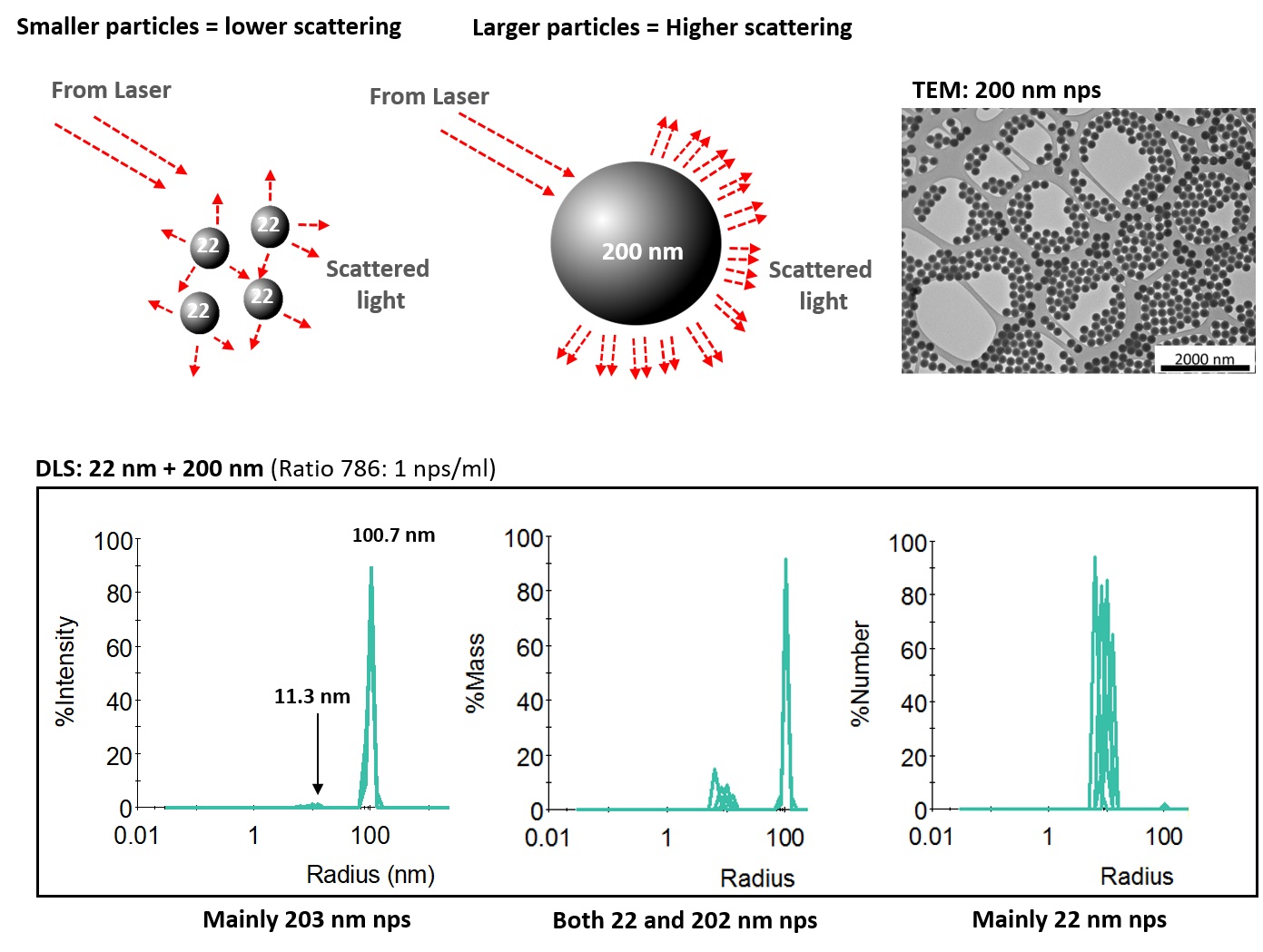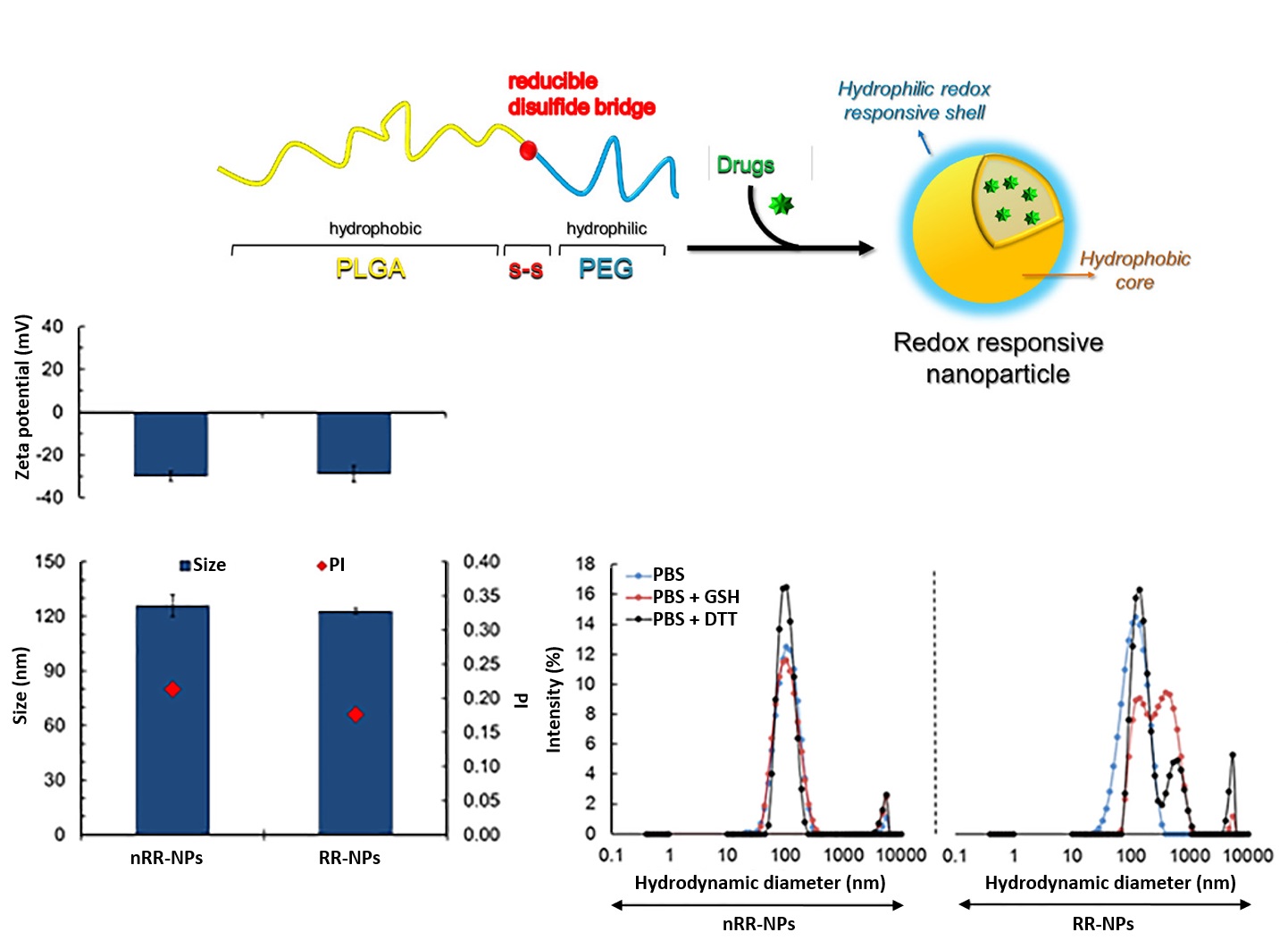Particle Sizing Suite
The Horiba LA-960 Laser Particle Size Analyzer for laser diffraction analysis
Particle sizing at a glance
Particle size analysis is the characterization of the size distribution (size range and/or mean size) of particles in a sample. Particle sizing can be applied to solid materials, suspensions, emulsions and aerosols. Different instruments that employ different measurement principles are used to carry out particle size measurements. Some of these techniques include laser diffraction (LD), dynamic light scattering (DLS), nanoparticle tracking analysis (NTA), Taylor dispersion analysis (TDA), differential sedimentation (disc centrifuge (DC)) and simpler sieving and separation methods. Method selection will depend on the size range of the particles, the nature of the sample, the capabilities and limitations of the analytical method, the information that is required from the analysis and the sample throughput desired. It is important to select the most suitable method for each sample as this can influence the result obtained.
Capabilities
- Particle size determination (monodisperse and polydisperse populations)
- Aggregate detection
- Assessment of colloid stability
- Zeta potential analysis
- Interaction studies i.e. particles and surface binding molecules
Typical Applications
- Product performance; Quality control in different industries (i.e. pharmaceutical, chemical, food and energy).
- Process performance; Determination of efficiency of manufacturing process (i.e. where milling or grinding is used).
- Research (i.e. nanoparticle characterization studies, study of surface modifications).
Image 1: Size analysis of a mixture of polystyrene nanoparticles

The distribution of particle sizes obtained from DLS measurements is fundamentally an intensity (%) distribution which can also be converted theoretically into volume (%) and number (%) distribution. The figure above illustrates how a comparison of the different distributions gives a better understanding of the sample population. This is especially important where mixed population sizes are present. Large particles scatter much more light than smaller particles, thus the intensity (%) through to number (%) distributions may vary as shown in the exemplar data collected from a mixture of 22 and 200 nm polystyrene nanoparticles. The particle size characterisation was carried out using a DynaPro Plate Reader II (Wyatt) instrument. The two population sizes were identified with the 22 nm nps being the major/main population by number (%) distribution in the mixture.
Figure courtesy of Marion J. Limo, ISAC, School of Pharmacy, University of Nottingham
Image 2: Size and zeta potential characterization of nanoparticles designed for drug delivery

An important step in the design of drug carrier nanoparticles is characterisation of particles size and surface change in appropriate environments. Redox-responsive PLGA (poly(lactic-co-glycolic acid)) - PEG (polyethylene glycol) nanoparticles (RR-NPs) were synthesised in a study aimed at developing programmable carrier nanoparticles for drug delivery into lung cancer tumour cells. The RR-NPs were designed to change surface properties when entering tumour microenvironments, which would in turn enhance their cell internalisation and delivery of drug cargo. For comparison, non redox-responsive nanoparticles PLGA-PEG nanoparticles (nRR-NPs) were also prepared. Characterisation was carried out using a Zetasizer Nano ZS (Malvern Panalytical) instrument. Bar graphs show particle size analysis (hydrodynamic diameter (DH) and polydispersity index (PI)) and zeta potential measurements of unloaded nanoparticles in water. Both RRNPs and nRR-NPs had DH around 120 nm, low size PI and high negative zeta potential values thus both nps had similar colloidal properties. Size distribution curves of RRNPs and nRR-NPs nanoparticles incubated at 37°C (30 min) in PBS and under different in vitro reducing conditions i.e. with and without L-glutathione reduced (GSH) and dithiothreitol (DTT) are also shown. The colloidal stability of RR-NPs was lower than that of nRR-NPs under the different in vitro reducing conditions tested.
Image adapted from reference: Claudia Conte, Francesca Mastrotto, Vincenzo Taresco, Aleksandra Tchoryk, Fabiana Quaglia, Snjezana Stolnik, Cameron Alexander. Journal of Controlled Release 285 (2018) 35-45.
Our facilities:
DynaPro Plate Reader II (Wyatt)
The DynaPro Plate Reader II is a highly sensitive high-throughput, automated DLS instrument that has a laser wavelength of 817.28 nm and scattering angle of 158°. It can measure particle/molecule sizes between 1 nm to 2 µm hydrodynamic diameter and give information on sample polydispersity. The instrument requires the use of either a 96-, 384-, or 1536- well plate thus has great advantage of use of low sample volumes (as low as 4 μL per well). Measurement operating temperature range is 4 °C to 85 °C. It uses DYNAMICS software for data collection and analysis.
Zetasizer Nano ZS (Malvern Panalytical)
A widely used instrument for size analysis of nanoparticles, colloids and proteins within the range of 0.3 nm to 10 μm hydrodynamic diameter. The instrument also performs electrophoretic mobility of proteins, zeta potential of nanoparticles and colloids as well as measurements molecular weight. Its laser wavelength is 633 nm and has two scattering angles; 173° Backscatter and 13° Forwards scatter. Measurements can be performed with temperature control between 0°C - 90°C. Zetasizer software is used for data collection and analysis.
Zetasizer Ultra (Malvern Panalytical)
The Zetasizer Ultra is a Multi-Angle Dynamic Light Scattering (MADLS) instrument designed for measurement of particle and molecular size, particle charge and particle concentration. It measures particle and molecule size, from below 1 nm to 10 µm. An Electrophoretic Light Scattering (ELS) system is also incorporated for zeta potential measurement of particles and molecules, indicating sample stability and/or propensity to aggregate. Its laser wavelength is 633 nm and has scattering measurement angles; 13°, 90° and 173°. Measurements can be performed with temperature control between 0 °C - 120 °C. ZS Xplorer software is used for method set-up and data analysis.
LA-960 Laser Particle Size Analyzer (HORIBA Scientific)
Designed based on Mie Scattering theory, the LA-960 laser diffraction instrument measures particle size between 10 nm and 5000 μm. It can be used to measure particle size from wet and dry samples such as suspensions, emulsions, powders, pastes, gels, and creams. It consists of two light sources in order to extend the lower detection limit of the technique; 650 nm red laser and 450 nm blue Light Emitting Diode (LED). Measurement operating temperature range is 15 to 35 °C. Its software is designed for ease of use in both manual and automated operation and also features a refractive index optimisation wizard.
Many more including...
Including CPS Disc centrifuge (CPS Instruments), Izon qNano etc